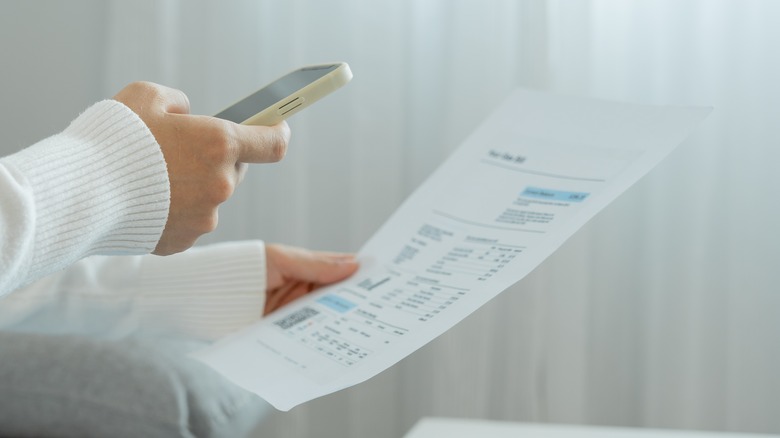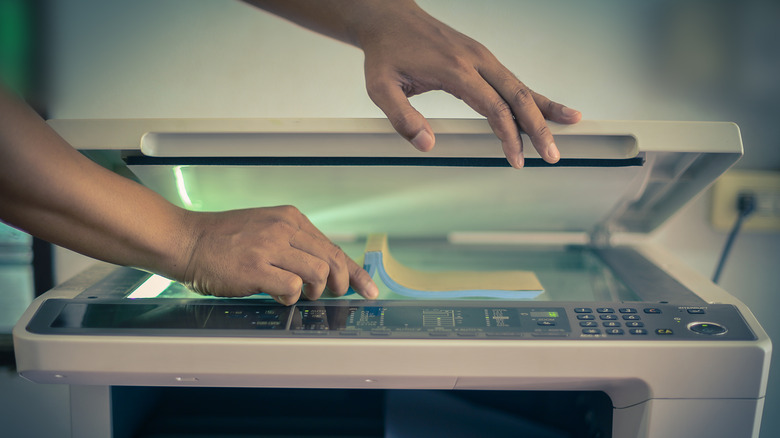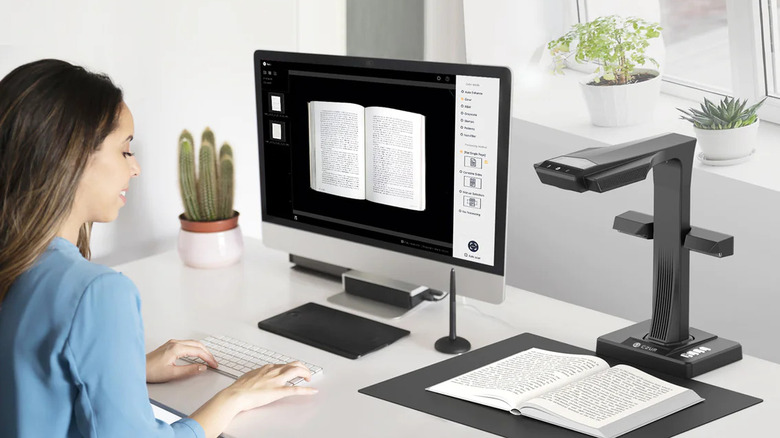How To Turn Any Book Into A PDF Or eBook
We may receive a commission on purchases made from links.
Nowadays, many people prefer digital books over their physical copies, and for good reason. Digital books don't take up space in your bag or table, can be conveniently accessed from virtually anywhere, and are searchable, which makes them ideal for referencing later (it can take time to find specific passages in a physical book, but mere seconds on an eBook). Unfortunately, you won't always find a digital copy of the book you need, especially if it was published way before computers. In such cases, you might want to convert that physical book into a PDF or eBook that you can then read on the eBook apps on your iPhone or Android.
There are several ways of doing so. You can use your phone, a traditional flatbed or sheet-fed scanner, or a modern smart book scanner. However, keep in mind that while you can digitize a copyrighted book, it doesn't necessarily mean you can freely distribute it. Make sure to use your digital copy for personal research or archival purposes only.
Method 1: Using a document scanner mobile app
One of the easiest and cheapest non-destructive ways to create a PDF/eBook from your physical book is with your smartphone. All you need to do is install a document scanner app, available on the App Store or Google Play Store, and you can start digitizing your book. These apps work by photographing each page, compiling the captured photos into a single document, and saving the document into specific file types, such as PDF, Microsoft Word, and JPG. Adobe Scan is among the top choices for scanning physical books as it comes complete with a tool dedicated to such purpose. Here's how to use the app:
- Download and install Adobe Scan on your phone.
- Launch the app.
- Sign in with your email or Google, Facebook, or Apple account.
- Allow access to your camera.
- Tab on the Book tab to change the capture mode. This lets you capture both book pages simultaneously, but Adobe Scan will separate them into different pages in the compiled document.
- Open your book and line the spine with the dotted line in the middle of the screen.
- Tap on the capture button. By default, Adobe Scan will also take photos of your book automatically once it detects the presence of the pages.
- Once you're done, tap on the photo preview in the lower right of the screen.
- (Optional) Use the editing tools to modify each photo.
- Tap on Save PDF to save the document.
Method 2: Using a traditional scanner paired with a PDF compiler
Using a scanner app can be tricky; you might have blurry and unusable photos. If you want a better-quality PDF/eBook, you can go the manual route by using a high-volume scanner to manually scan the pages of your book. You can then convert and compile these images into a PDF using your preferred software. You can use the online tool JPG to PDF, where you can upload up to 20 images and convert the JPG files into a single PDF, or install the free Pixillion Image Converter on your computer.
There are two types of scanners you can use: flatbed and sheet-fed. For the flatbed scanner, you need to scan every page separately. This can result in a slow and tedious digitization process. For the sheet-fed scanner, on the other hand, you'll have to go through the extra step of de-binding your book (melting the glue on the binder with a heat gun to separate all the pages). However, this can be faster than using a flatbed scanner since modern sheet-fed scanners can scan both sides of the paper at the same time. Highly-rated scanners on Amazon include the Epson Perfection V39 II, Canon CanoScan Lide 300, and HP DeskJet 4155e Wireless Color Inkjet Printer with Scanner for flatbed scanners and Brother DS-740D Duplex Compact Mobile Document Scanner, Canon imageFORMULA R40, and Epson WorkForce ES-50 Portable Sheet-Fed Document Scanner for sheet-fed scanners.
Method 3: Using a smart book scanner
Depending on your book's length, you might spend hours digitizing it using a document scanner app or a flatbed/sheet-fed scanner. These techniques are not only time-consuming, but there are also instances when you can't capture the entirety of the page because of the book's curvature. You'd have to flatten the book as best you can or de-bind it completely. If you're looking for a quicker and more efficient digitization process that also addresses concerns about curved pages, a smart book scanner is a more suitable option for you.
Smart book scanners use HD cameras and other sophisticated imaging technologies to take high-quality images of the book pages. This accelerates the process into minutes instead of hours (some smart book scanners claim to scan a 300-page book in under ten minutes). This type of scanner also features automatic page flattening for minimizing page distortions, optical character recognition (OCR) for analyzing a text-filled image and converting it into an editable format, and a dedicated app that eliminates the need for third-party software. You can use the app to set your scanning preferences and create a PDF of the captured images. Popular smart book scanning options include CZUR Shine Ultra, VIISAN DL8, and IRIScan Desk 5 PRO. However, it's important to note that smart book scanners can cost more than traditional scanners, with high-end models priced at upwards of $600.



